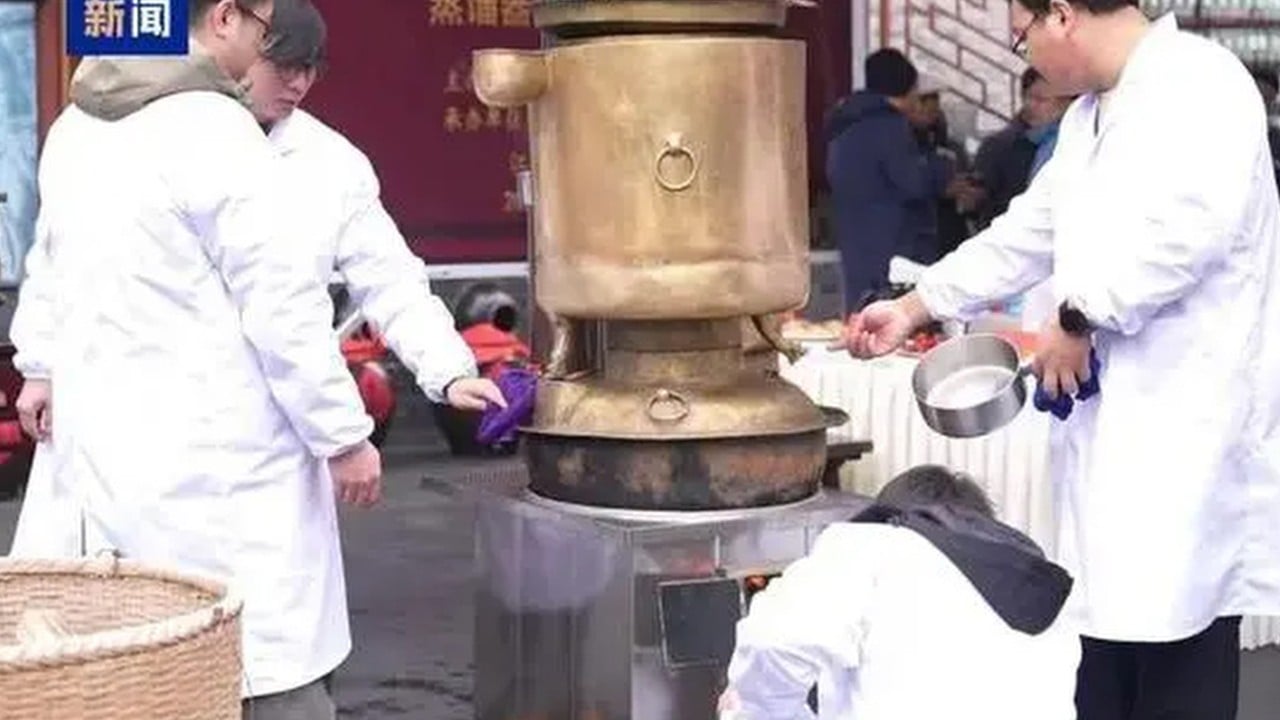Chinese archaeologists have made distilled wine in a replica of a bronze vessel unearthed from an emperor’s tomb dating back 2,000 years – using taro and the same process believed to have been used at the time.
Advertisement
The bronze still was discovered at the tomb of Liu He, the deposed ninth emperor of the Western Han dynasty (202BC-AD9). It is one of the best preserved tombs from that dynasty.
The team presented the results of their experiment on Thursday at a meeting attended by experts in Nanchang, in the eastern province of Jiangxi, where the emperor’s tomb is located, according to state broadcaster CCTV.
“This discovery is remarkable. It has recreated this product from the Western Han dynasty – from the selection of raw materials to the production process and the instrument,” said Zhang Zhongli, an archaeologist with the State Administration of Cultural Heritage who heads the tomb excavation project.
Distilled liquor is believed to date back to the Yuan dynasty (1279-1368) in China, according to records in the ancient Chinese medical book Bencao Gangmu, or the Compendium of Materia Medica.
Advertisement
But the experiment with the replica vessel suggests the original could have been used to produce distilled alcohol – meaning distillation techniques could go as far back as the Western Han dynasty.


